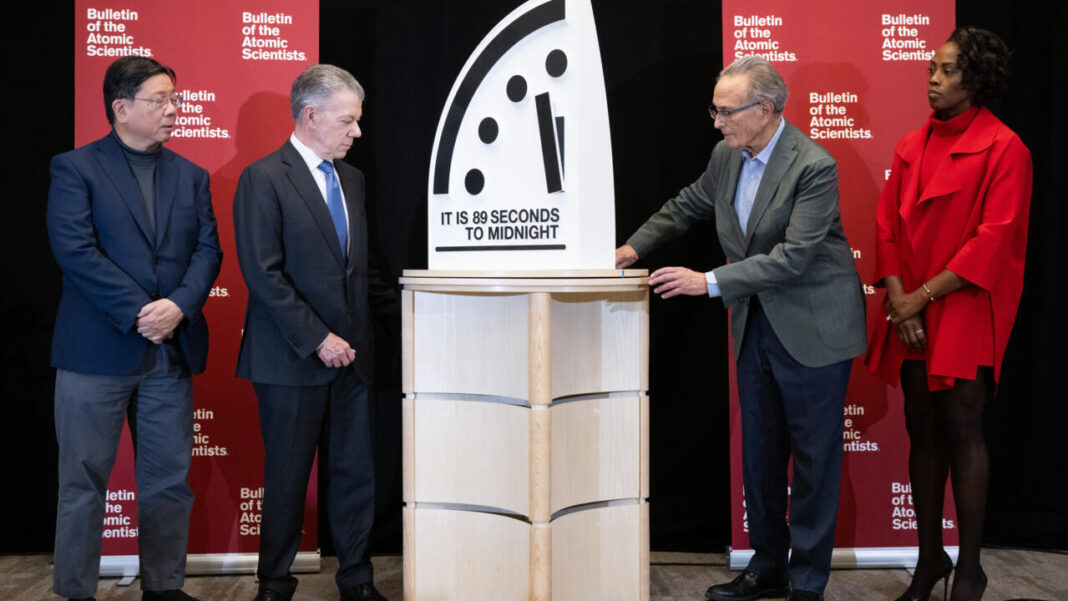The Bulletin of the Atomic Scientists has officially set the Doomsday Clock to 89 seconds to midnight, making it the closest it has ever been to a global catastrophe. This historic adjustment reflects growing concerns over nuclear threats, climate change, and emerging technological risks. With multiple crises unfolding worldwide, this announcement serves as a wake-up call for global leaders and citizens alike.
Why the Doomsday Clock Moved Closer
The decision to move the clock forward was based on several pressing global issues. Experts have highlighted four major concerns that have significantly increased global risks.
- Nuclear Threats: The ongoing war in Ukraine has heightened fears of nuclear escalation. Tensions between nuclear-armed nations continue to rise, making the world more unstable.
- Climate Crisis: Rising global temperatures, extreme weather events, and slow progress in addressing climate change contribute to the growing sense of urgency.
- Artificial Intelligence Risks: The rapid advancement of AI, particularly in military applications, introduces unpredictable risks that could destabilize global security.
- Biological and Misinformation Threats: The spread of infectious diseases and misleading information further complicates efforts to address global crises.
The Historical Context of the Doomsday Clock
The Doomsday Clock was first introduced in 1947 as a symbolic representation of how close humanity is to self-destruction. Over the years, it has moved forward and backward, depending on world events.
- In 2023, the clock was set at 90 seconds to midnight, marking the closest point at that time.
- The previous record before 2023 was 100 seconds to midnight, set in 2020 due to rising geopolitical tensions and environmental concerns.
- Now, at 89 seconds to midnight, the world is facing its most dangerous moment yet.
What This Means for the Future
The new setting of the Doomsday Clock is a stark warning. It signifies a failure of world leaders to take decisive action against existential threats. However, there is still hope. If immediate steps are taken, the situation can be improved.
- Stronger diplomatic efforts: Nations must engage in peaceful negotiations to prevent conflicts from escalating.
- Accelerated climate action: Governments need to implement policies that reduce carbon emissions and promote sustainability.
- Responsible AI development: Regulations should be put in place to ensure AI is used ethically and safely.
- Better crisis communication: Misinformation must be countered with accurate and transparent reporting.
A Call for Urgent Action
The 2025 Doomsday Clock update serves as a reminder that the world stands at a critical crossroads. While the risks are increasing, there is still time to make meaningful changes. Every second matters. By addressing nuclear risks, climate change, and technological threats, humanity can move toward a safer and more stable future.
Now more than ever, global cooperation and decisive leadership are needed to turn back the clock before it’s too late.



